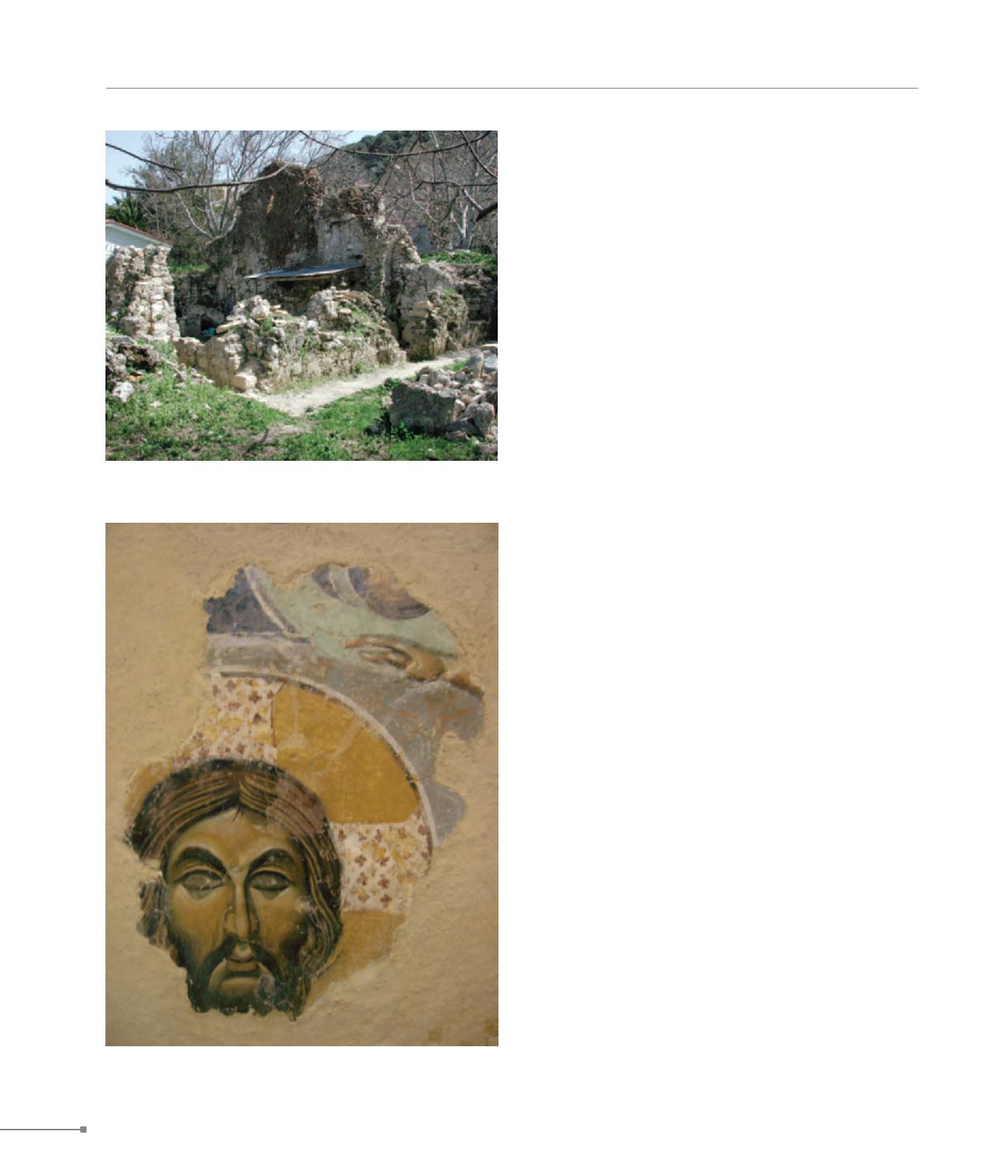
Potamoi.
Patso.
CRETE
260
402. Patso, Panagia, wall painting (Πατσώ, Παναγία, τοιχογραφία)
402. Patso, Panagia (Πατσώ, Παναγία)
400.
Potamoi.
In rural surroundings extensive excavations that took place
during dam construction works yielded the ruins of a bath
house dating from the Late Roman occupation. It was in use
in the Early Christian period and survives at a good height.
At a neighbouring location, beneath the single-nave church
of Saint George, which has frescoes in two layers from the
late 12th c., remains possibly of a three-aisled Early Christian
basilica have been revealed. Further S, beneath the decorat-
ed church of Aghia Kyriake, the possible remnants of a dye-
house have been discovered.
401.
Spili.
In the grounds of the Lyceum stands the barrel-vaulted, sin-
gle-nave church of Saint George, with wall-paintings of the
mid-14th c. There are also the frescoed churches of Aghioi
Theodoroi (14th c.), of Panagia (late 14th c.), and of the Soter
(first half of the 14th c.). At Drymiskos are found the church of
Saint George (1317-8), work of the renowned painter Michael
Veneris, the church of Saint Constantine (first half of the 14th
c.), with an interesting scene of an equestrian dedicatory
saint, and the church of Panagia. At Mournes are the decorat-
ed churches of Saint George and Aghia Marina (early 14th c.).
At Ntimplochori survives another church of Panagia, whose
original E section was painted in the 13th c. and the subse-
quent narthex in 1417.
402.
Patso.
In a gorge close to the village of Patso, named after the great
Byzantine Patsos family, is found the cave church of Saint
Anthony, which is located at the sanctuary of Hermes Kra-
naios, worshipped since antiquity. In the centre of the village
survive the ruins of the church of Panagia at a good height.
This Mid-Byzantine cross-in-square church collapsed and was
reconstructed in the early 14th c. in the same architectural
type with strong Western features. The apse of the bema was
converted into a rectangular apse with a synthronon and sup-
porting ribs. The wall decoration of the early 14th c., today
mostly removed, is exhibited in the church of Saint Catherine
in Heraklion. The rebuilding of the church of Panagia is prob-
ably associated with the activities of the Kallergis family, after
they signed a treaty with the Venetians in 1299.


